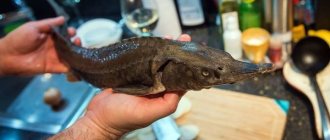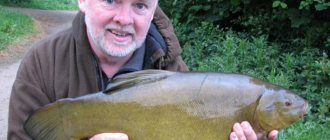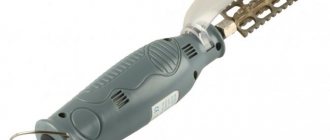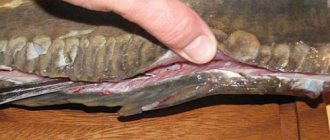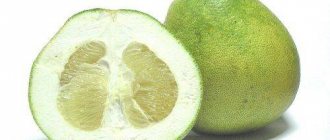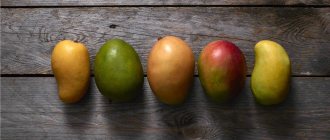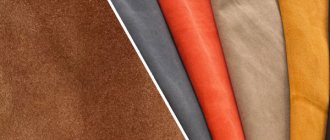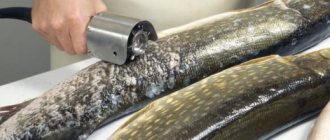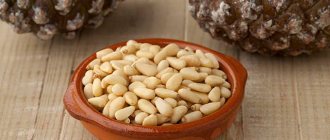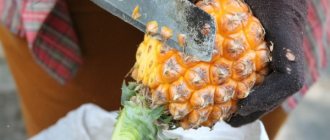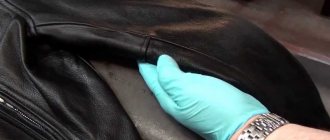Fish has long been considered a source of a large number of useful elements, and its regular consumption allows the human body to receive all the necessary substances.
Among all the varieties of fish, sturgeon occupies a special place. It is one of the oldest representatives of fish, and its meat contains fats, amino acids, minerals and vitamins in large quantities. In addition to its benefits, sturgeon also has an incredible taste that will not leave any gourmet indifferent. However, in order for a dish made from this fish to be truly tasty and healthy, you need to know how to clean sturgeon, since this process differs from cleaning other fish.
Features and value of sturgeon
Sturgeon is one of the oldest fish on the planet, living in the aquatic environment since the time of dinosaurs. Sturgeon is rightfully considered the king fish; its tasty and tender meat is a storehouse of fatty acids, amino acids, minerals and vitamins, which has a positive effect on the human brain and cardiac activity and ensures the prevention of atherosclerosis.
tasty and healthy fish
The sturgeon has tough skin that feels like sandpaper, covered with scutes of bone tissue - popularly called “bugs”. The sturgeon has no vertebrae, and therefore no bones. Cartilage is a replacement for vertebrae. A special feature of the sturgeon is the presence of a chord, which is more often called a viziga. This is a white vein that runs along the entire length of the sturgeon's cartilaginous spine. When cutting fish, the vizigu must be removed, since within 3-4 hours after the death of the sturgeon, it absorbs poisons.
When cleaning and cutting sturgeon, you must follow certain rules.
Cleaning fresh carp from scales at home
The carp, whether it is a large mirror specimen covered with a small number of scales or an ordinary freshwater carp covered with a small scaly layer, needs to be cleaned before production. For the purpose of this process, you can take a regular knife. If the required skills are missing, the tool is not quite sharp. To avoid injuries and cuts, you can use a spoon or fork. To clean the carcass, they also use metal scrapers, which can be purchased at any hardware store, or a vegetable peeler with a long blade - with it the event will go faster and easier.
When to cut sturgeon into layers
- Trim the fins using a sharp knife or kitchen scissors. Movements with the knife should be away from you to avoid causing cuts.
- If we cook the sturgeon whole, remove the gills. Otherwise, we cut off the head.
- If necessary, we flatten the carcass - we place it on a cutting board with its back up and from the head we cut it lengthwise into halves, called links. The cut line during plastering should run strictly in the middle of the fatty layer of the vertebral cartilage; if this rule is not followed, the shape of the links will be incorrect and excess waste will appear. We cut each link into the number of portions you need.
Many successful fishermen and housewives make videos, clearly showing that a kadom can clean sturgeon at home. Here's one of them.
How to clean sturgeon - video
In some cases, sturgeon is cleaned and cut without defrosting, for example, to prepare planed fish, but for some, this method of cleaning fish is simply the most convenient.
How to clean fish
This article is devoted to cleaning river fish (in general, the cleaning scheme is the same for all fish found in freshwater bodies of Russia). Having mastered the technique on crucian carp, perch, pike, roach and bream, which are often found in central Russia, the experience can easily be extended to both sea fish (trout, salmon, dorado, siabass) and varieties common in stores (carp, silver carp, grass carp). In general, it doesn’t matter what kind of fish you clean - the principle and sequence of actions will be the same.
1. For clarity, let’s take the most common medium-sized crucian carp in reservoirs.
01 Small (palm-sized) crucian carp
2. Cleaning live fish is neither humane nor convenient, so the first thing you need to do is kill it. To do this, either leave her in the air for a while until she falls asleep or hit her on the head, for example, with the handle of a knife.
02 Stunning a fish with a knife handle
3. Next you need to actually clean the scales. The scales begin to be removed from the tail of the fish and end towards the head. For this operation, a small knife is best suited, and its sharpness does not matter; even a dull one is preferable since it cannot cut you. But you should only think about a separate cleaning knife if you need to clean a lot of fish. First one side of the fish is cleared of scales, then the other. Also, do not forget about the abdomen - there are especially hard and durable scales that are the most difficult to clean.
03 Beginning to remove scales from the fish's tail
4. After removing the scales, you can remove the eyes from the fish, the key point is that it is not necessary to remove the eyes, they are edible and taste almost no different from the rest of the fish, but there are people who are embarrassed by them on the plate, so they are removed. This is done with the sharp tip of a knife.
04 Eye removal
5. Now the most crucial moment (perhaps the only point, if you make a mistake, you can ruin it). The belly of the fish must be cut and this must be done so that the knife is parallel to the fish and in no case is the sharp tip pointing inward. So you need to cut from the head to the ventral fins. This is where the gallbladder is located.
05 Cutting the front of the belly
6. From the ventral fins and further to the tail, you can cut as you like.
06 Cutting the back of the belly
7. All intestines and swim bladder from the belly of the fish must be removed. If you have it, you can leave the caviar or milt separately, but this is for fish caught from late August to May.
07 Guts in the belly
8. When removing the intestines, you should be careful and never damage the gallbladder. If you pierce it and the bile spreads over the fish, it is easier to throw it away than to continue cleaning and cooking - the taste will be bitter and disgusting.
08 Gallbladder among other intestines
9. There should be nothing left in the belly of the fish after cleaning. If the fish had caviar or milt, you can put it back in the belly and cook it that way.
09 Empty belly of crucian carp
10. The last thing to do with the fish before transferring it to the kitchen for further cooking is to remove the gills. To do this, you need to cut the bridge from below with a knife between the head and the rest of the fish’s body.
10 Trimming the lintel
11. The gills are quite easy to remove, the main thing is to pick them up with a knife and just pull them out.
11 Removing the gill strings
12. That’s all, the fish (crucian carp) is cleaned. After cleaning and before cooking, it is advisable to rinse the fish in clean water. It took 7 minutes to clean this one taking into account photographing. If you don’t get distracted, it takes 2-3 minutes for one small crucian carp. Larger fish can be cleaned more slowly because there are more scales to remove and it is not convenient to hold.
12 Bowl of cleaned crucian carp
Cleaning a frozen carcass
- We cut off the head, if it will be used for cooking in the future, remove the gills.
Cutting off the head - We hold the carcass by the tail and rest it against the cutting surface at the cut point.
We rest the cut side of the carcass on the cutting surface - Cut off the top spines, grabbing a small strip of skin.
Cut off the top thorns - We cut the skin at the tail and remove it in strips from top to bottom around the entire carcass.
Cleaned carcass - We make a longitudinal incision on the belly of the carcass.
Ripping open the belly - Remove the entrails and wash the carcass.
- We remove the vizig using one of the methods described above.
Video: how to clean frozen sturgeon fish
Sturgeon for cooking can be used both with and without skin. If the fish is baked whole, then for the aesthetics of the appearance, we do not remove the skin and head. If you decide to stuff sturgeon, you need to properly prepare the ingredients.
The best way
Having examined the different types of killing live fish, we can come to the conclusion that an absolutely simple and reliable way is to cut the abdominal aorta, located between the head and gills. When using this option, complete success is guaranteed, which cannot be said about stunning. In this case, the blood leaves the fish unhindered, thanks to this it is possible to obtain higher taste qualities and an increase in the density and whiteness of the carcass. You just need to remember that this method only works well when the fish is still full of life and its heart is diligently pumping blood. Until the blood drains, the fish is left alone and only then they begin to cut it.
Carp recipes
Once you have completed the cleaning, you can start cooking. Carp is a universal fish. It can be cooked in the oven, on the grill, and in the smokehouse. The most important thing is that when cooked correctly, the meat turns out to be very tasty. We have prepared a couple of recipes that will please any connoisseur of this freshwater fish.
Fried carp with crispy crust
- carp - approximately 1.5 kg;
- lemon - 1-2 pieces;
- wheat flour (for deboning);
- salt to taste;
- pepper (ground black) to taste;
- vegetable oil (for frying)
Preparation:
- Cut the fish into steaks approximately 2 cm thick.
- Blot with paper towels to remove excess moisture.
- Place the carp in a bowl and sprinkle with salt, pepper, and lemon juice.
- Leave for 10 minutes.
- Dip each steak in flour. This will give an original taste and golden color to the finished product.
- Pour vegetable oil into the frying pan until it completely covers the bottom.
- Place the steaks and fry on both sides for 5-7 minutes over high heat until golden brown.
- If the pieces are large, then at the end of frying, cover with a lid and fry under it over low heat.
- Place the finished steaks on paper towels to remove excess oil.
Fried carp is ready. You can serve with onions or other side dishes. Don't forget to sprinkle with herbs and sprinkle with lemon juice for taste.
Stuffed carp with vegetables and mushrooms
- carp - 1.8 kg;
- sour cream (or mayonnaise) - 50 g;
- fried mushrooms - 100 g;
- onion - 150 g;
- carrots - 150 g;
- lemon (juice) - 0.5 pcs.;
- salt - 1 tsp;
- ground black pepper - to taste;
- seasoning for fish - 0.5 tsp;
- vegetable oil - for frying.
Preparation:
- Cut the carcass from the top from the back to the ridge into portioned pieces. In the incised places, cut the ridge.
- Mix all seasonings with salt.
- Rub the mixture onto the fish.
- Sprinkle with lemon juice.
- Fry the onions with mushrooms and carrots in vegetable oil and add a little salt.
- Lubricate the carp with sour cream or mayonnaise.
- Stuff with vegetables and mushrooms.
- Bake the stuffed carp for 40-50 minutes at 200°C.
Carp stuffed with mushrooms and vegetables is ready.
Cleaning carp is not as difficult as it seems. You should not deny yourself gastronomic pleasure because of this process. If you follow all the rules, the result will exceed your expectations, and soon you will be cleaning like a real professional. Healthy and tasty fish will become your favorite dish!
